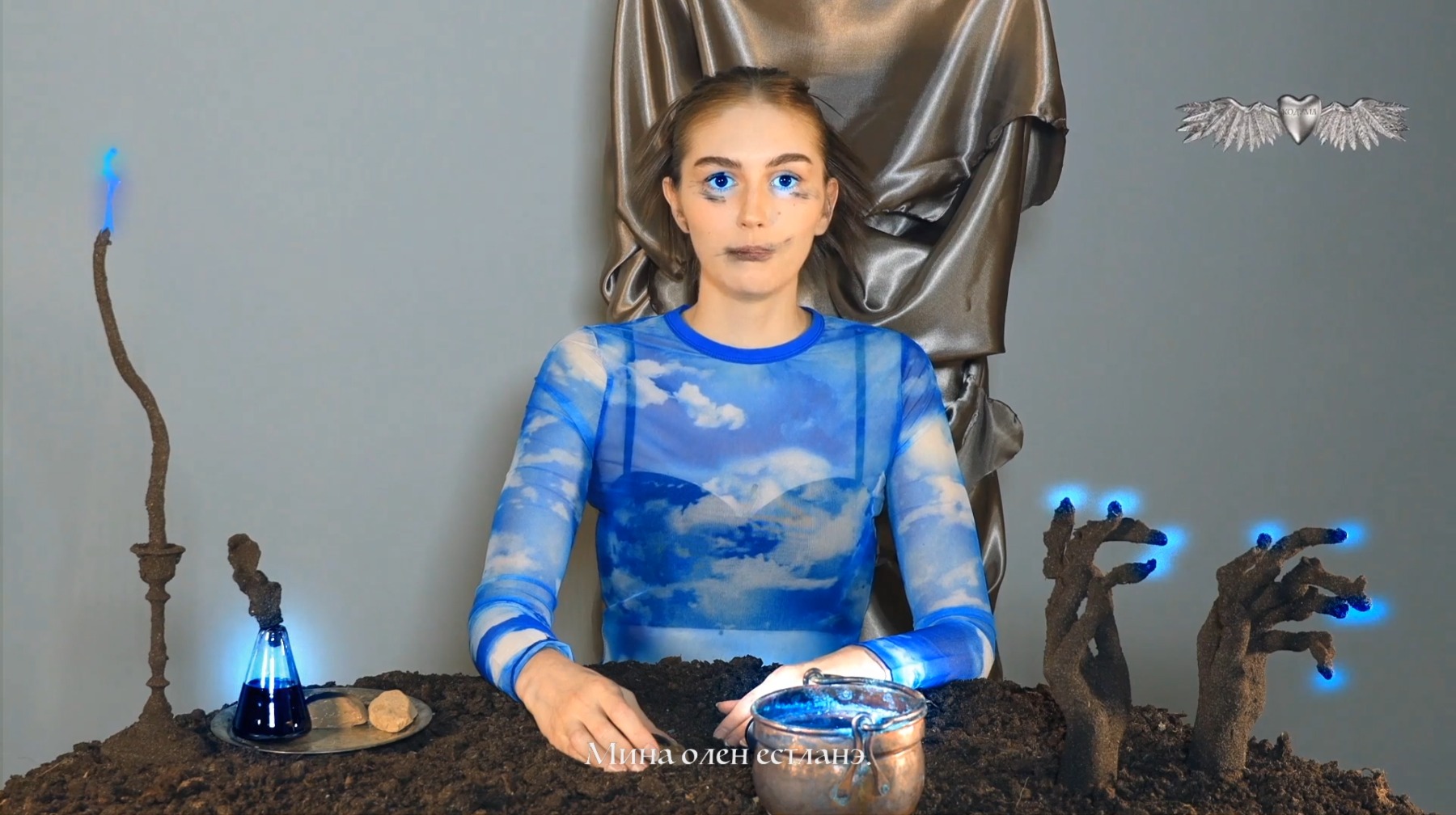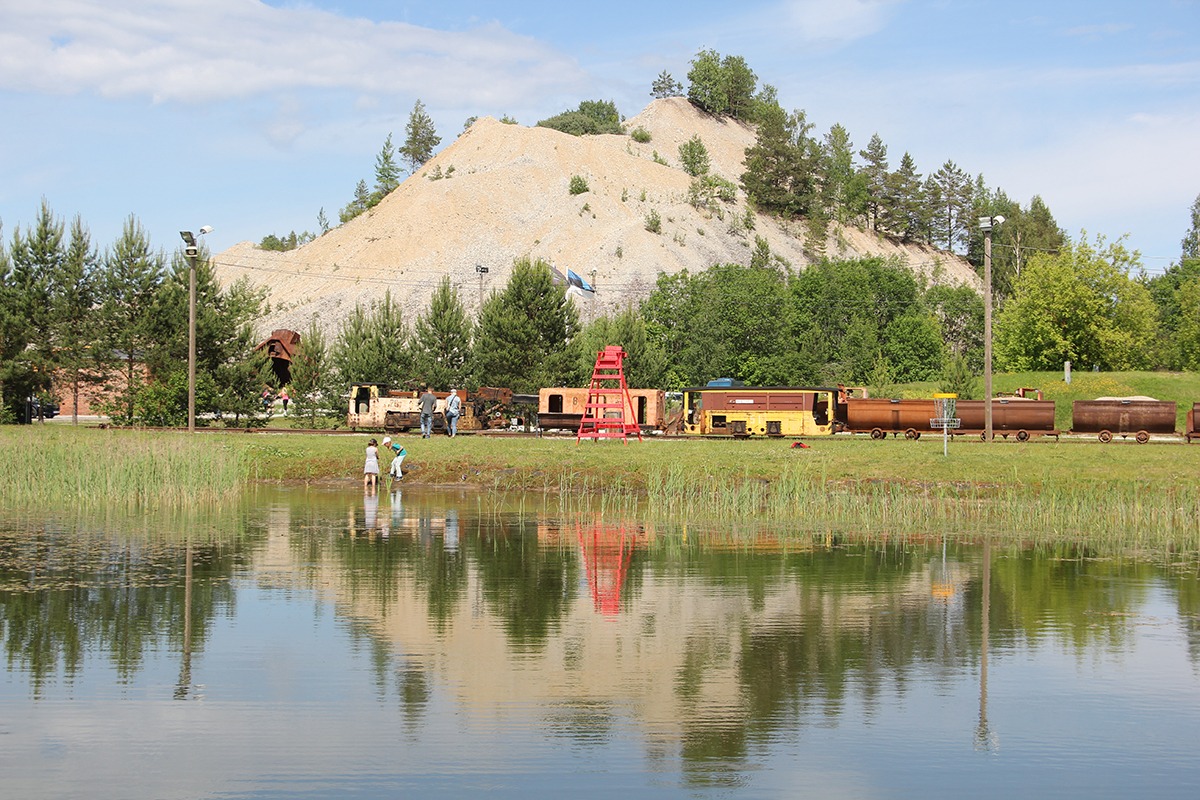
We live in a time of historical amnesia
Francisco Martínez and Corina Apostol converse about their current curatorial projects, Life in Decline (Estonian Mining Museum) and What Makes Another World Possible? (Tallinn Art Hall).
Francisco Martinez:
“The main revolution to be done is to raise awareness of the value of things around us”.
“It is not fair to put the responsibility of resolving collective problems on the shoulders of artists”
Corina Apostol:
“We live in a time of historical amnesia”
“Can we imagine an alternative system of values based on a different meaning of progress?”
Francisco Martínez is an anthropologist dealing with contemporary issues of material culture through ethnographic experiments. In his work, he explores how the materiality around us frames the way we know the world, making use of exhibitions as a methodology for social research. In 2018, he was awarded with the Early Career Prize of the European Association of Social Anthropologists. Francisco has published different books, including: Ethnographic Experiments with Artists, Designers and Boundary Objects (UCL Press, 2021) and Remains of the Soviet Past in Estonia (UCL Press, 2018).
Art historian Corina L. Apostol is a curator at the Tallinn Art Hall. She has edited with Nato Thompson the book Making Another World Possible (Routledge, 2019). Corina is also the curator of the Estonian pavilion of the next Venice Biennale, working with artists Kristina Norman, Bita Razavi and Emilie Rosalie Saal. Her work has been recognized with nominations for the 2015 Fundation Prince Pierre de Monaco Prize, the 2016 Kandinsky Prize, and the 2020 Sergey Kuryokhin Award.
Anna Shkodenko, Standby Regime. Exhibition "Life in Decline". Photo: Joosep Kivimäe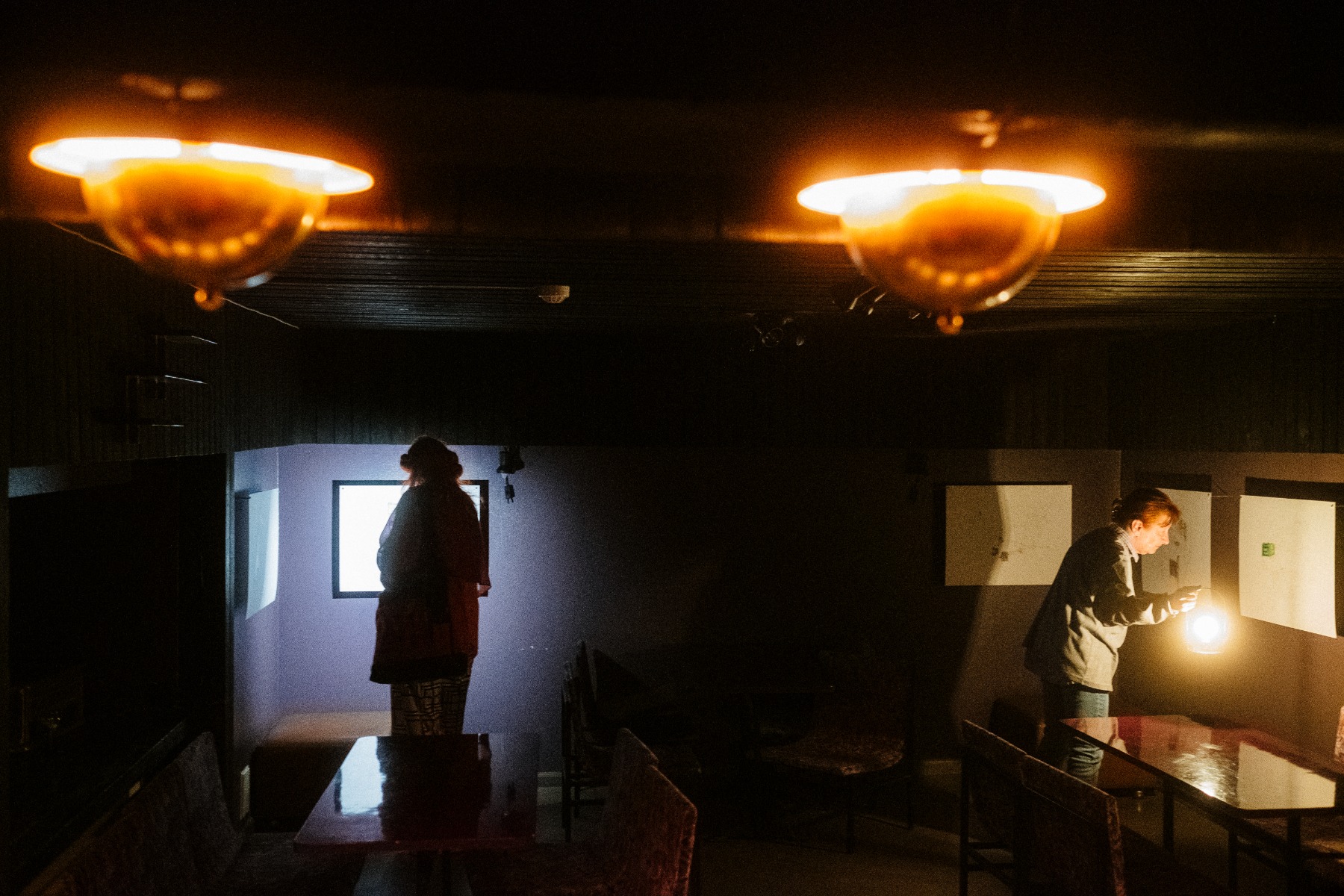
1.
FM.: I believe that our exhibitions have very different starting points. The trigger of Life in Decline was to understand how the world is put together again and again, even under a condition of negative capability and a context of environmental disaster, such as those present in Eastern Estonia. Hence, I believe that our main task is not to make another world possible, but rather to take care of the one we already have.
Also, my exhibition is part of a wider anthropological study that intends to understand the fragility of the things we construct and how socio-material stability is maintained, sometimes against the grain. It assumes that such purpose requires experimental collaborations with different stakeholders, and a creative combination of the aesthetic and the analytical, thus turning the exhibition into a method for research.
So, while your exhibition places an emphasis on artistic interventions aiming to change the world, mine tries to understand the ordinary actions that make the world last in time. In reality, these are two different forms of intervention: yours refers to heroic attempts at changing things in the modern utopian sense, whereas mine instead focuses on the minor key maintenance work, practicing micro-utopias. Thought I do not want to reduce our political horizons to questions of palliation that exclude the possibility of radical transformation…
Darja Popolitova. ЭСТИМА КОДУМА. Exhibition "Life in Decline". Photo: Joosep Kivimäe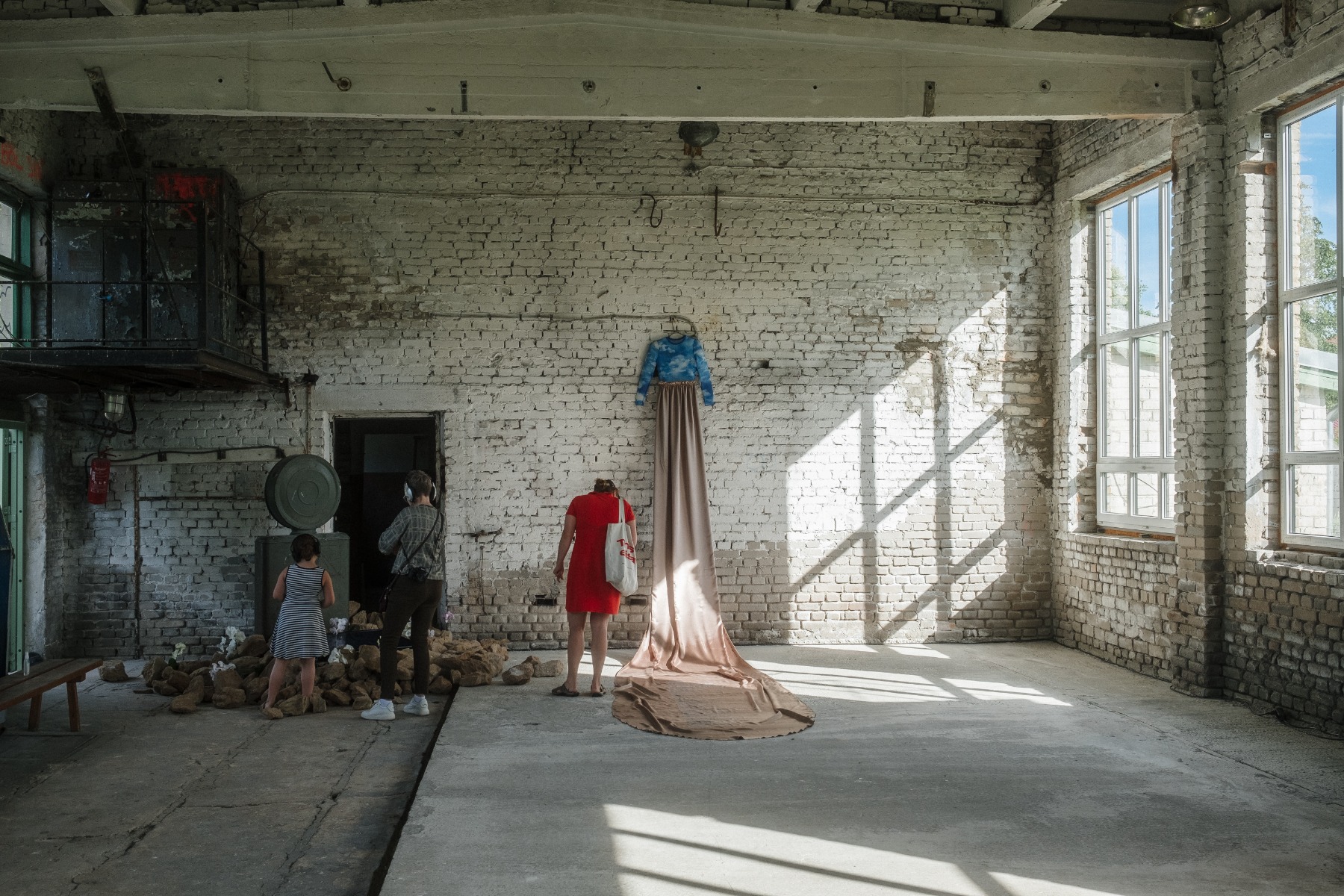
CA.: I based the exhibition What Makes Another World Possible? on the book I co-edited with Nato Thompson entitled Making Another World Possible, which came out right before the global pandemic in the framework of the tenth anniversary of the Creative Time Summit. This international convention was held to discuss the field of socially engaged art and contemporary political issues. Since the Summits began in 2008, I strongly believe that socially engaged art has moved from the periphery of the art world to occupy a central part of the discussion on contemporary art and politics. Since the crisis of 2020, this shift has taken place against the backdrop of a dramatically changing world, one where there is a growing global consciousness or awareness of shared environmental, political, and economic fate; a world defined by a shared perception of crisis. In my exhibition, I have sought to bring these two strands together – art activism and global politics – with a particular focus on the last decade in the Baltics, East-Central Europe and Russia.
Like Francisco’s exhibition Life in Decline, each artistic project is based on research undertaken over a longer period of time. During this decade, right-wing governments of i-liberal democracies have grown to consolidate their power. However, as we have witnessed, their approach to the pandemic crisis did not result in progressive political change. The spread of conspiracy theories, continued violence against migrants, people of color and the queer community, and repressions of women’s rights, among others, have only served to bolster the support of nationalist and anti-democratic politics in our societies. Within this context, where the local and global are closely interconnected, my exhibition asks, ‘What other world is possible that is built on the premise of a new, emancipatory politics?’
Anne Rudanovski, The work of time 3 by Laura Kuusk. Exhibition "Life in Decline"
2.
FM.: You argue that the key aim of socially engaged art is to address and challenge power structures, yet the way of doing so is not the same in the 1960s as it is nowadays. In this sense, I appreciate how you trace back activist ideas and collectives; however, I believe that the breakdown of both things and people is our epistemic and experiential reality in the present. This, and the awareness of the limits of the world, are, in my view, our key contemporary problems.
We are in a new epoch, the Anthropocene, so political engagement cannot be the same as it was in terms of practices and topics, as well as with whom. Nowadays, one way of being political and critical starts by recognizing that the world we inhabit is not just for us, reserved for later use and with resources available for extraction. In Estonia, we keep ignoring the fact that many of the things that we discard, demolish or abandon have value. We are blinded by our arrogant obsession with newness, growth and innovation. In many contexts, the main revolution to be done is to raise awareness of the value of things around us.
Chto Delat? One Night in a Social Network: An Opera-Farce. 2020. Exhibition "What Makes Another World Possible?" Photo: Paul Kuimet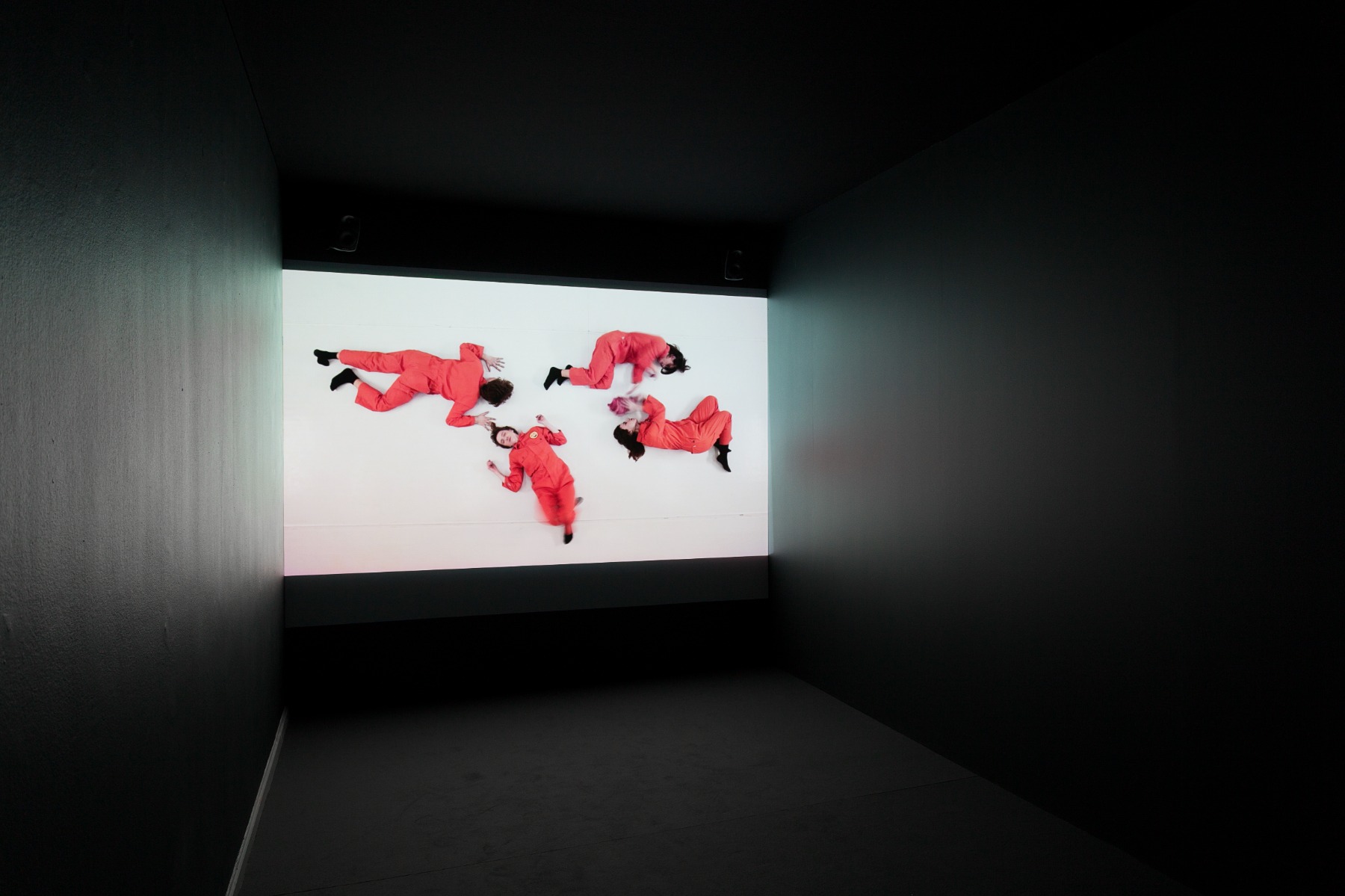
CA.: A core component of my exhibition is its attention to history, tracing back connections between art, politics and engagement. Timothy Snyder, the author of On Tyranny, has rightly pointed out that “democracies depend on history.” In his book, Snyder discusses tyranny and authoritarianism, which we can think about at the macro level; for example, Trumpism in the US. But what has happened is that these practices also trickle down to educational institutions, where some people decide that alternative facts or fake news are viable and should be taught to young people. Democracy is the ability to recognize that you’ve made mistakes and that you can do better. I strongly believe we live in a time of historical amnesia, where younger generations are increasingly detached from learning history. If we don’t have a history, we cannot correct ourselves, and we don’t know what happened in the past, which is why I invited artists like Lia Perjovschi and the collective Chto Delat? to intervene in the exhibition. Lia has adapted her recent work, ‘Key Words 2020’, to the context of Estonia during the pandemic by connecting it to other such crises in human history and possible solutions, while I have worked in close collaboration with Chto Delat? to create an artistic timeline resource and reference archive that deals with post-WW2 forms of political activism and socially engaged art.
Lia Perjovschi. 2020. Key Words. Exhibition "What Makes Another World Possible?" Photo: Paul Kuimet
In relation to the concept of the Anthropocene, in my book, I prefer to draw on Isabelle Stengers’ concept of ‘Cosmopolitics’, where diverse stories, perspectives, and practices connect to lay the foundation for new strategies and radical possibilities. In my book, I presented a diverse range of approaches to the ecological crisis and its economic, social, and cultural affects and effects. In the exhibition, I invited artist Sandra Kosorotova, who works between Tallinn and Narva, to create a site-specific installation revealingly titled ‘Grassroots: How to Resist like a Weed?’ that deals with resilience in the face of environmental degradation, as well as the hateful vocabulary around these plants and the anxieties about national character and purity.
Sandra Kosorotova. Grassroots: How to Resist Like a Weed? 2021. Exhibition "What Makes Another World Possible?" Photo: Paul Kuimet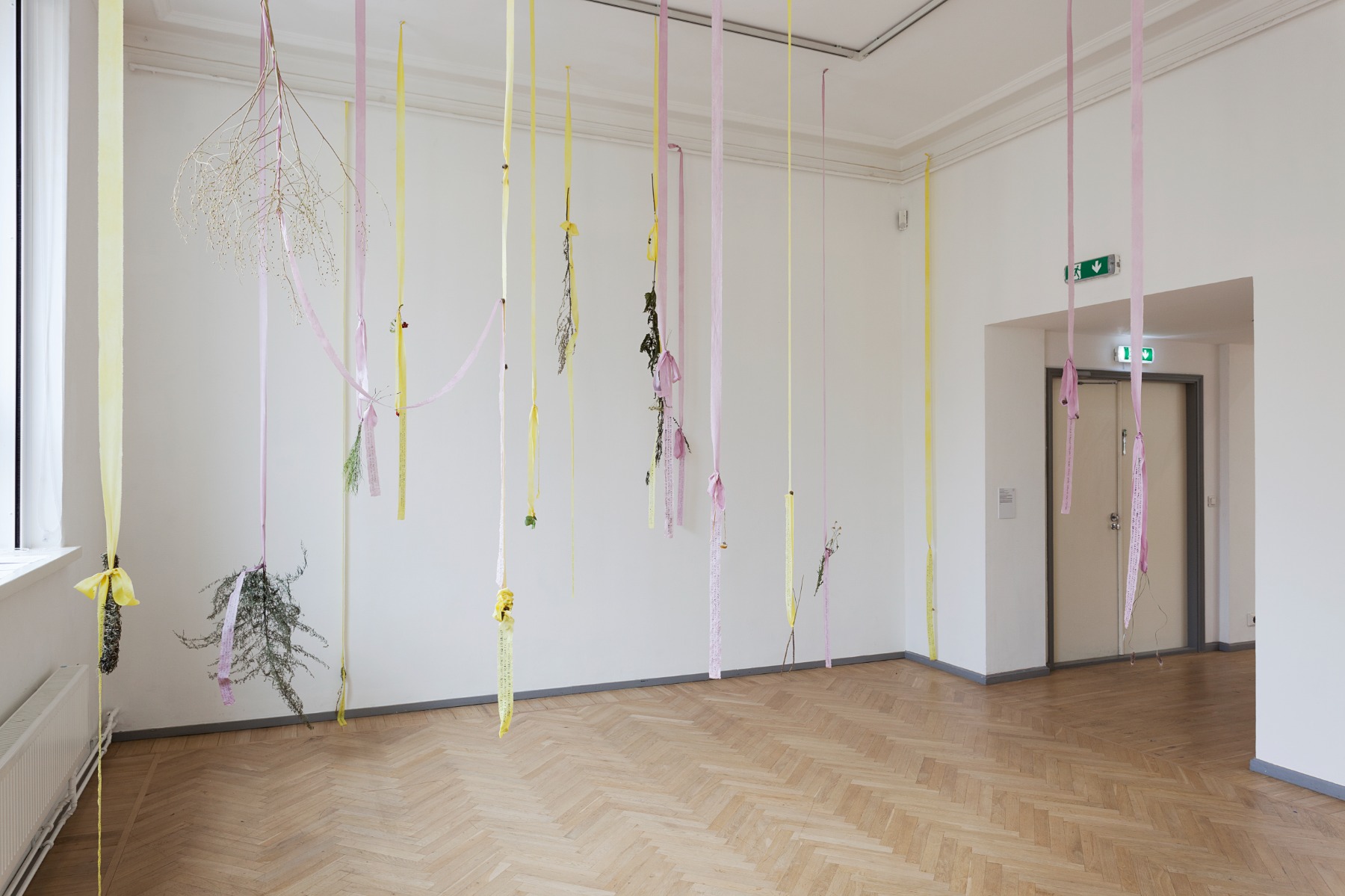
3.
FM.: Our exhibitions produce a different aesthetic experience for the visitor. The exhibition space of Life in Decline was designed as a twilight zone, a sort of conceptual area meant to generate a suspension of knowledge and characterized by being undefined, intermediate and mysterious. For that, we intensively made use of the existing materiality in the former administrative building of the Kohtla mine, approaching these artefacts as affect triggers and mnemonic objects, while also contributing to produce an atmosphere in which the pre-defined cognitive tools of visitors somehow stop working. Some of the comments written in the guest book show that several visitors noted our exhibition design. For instance, one visitor wrote: “it feels as if workers had just left the building”.
CA.: When thinking about the aesthetics and meanings of my exhibition, I had several categories of audience in mind. First, I wanted to create a space for knowledge and inspiration for the committed – those already involved in socially engaged art in the region. Then, I also wanted to create an experience for those art world insiders to communicate and build interest among artists, students and cultural professionals in the Baltics and further afield who would like to learn about, pursue or support socially engaged art. Further, I have in mind those political activists whom I would like to offer both a resource and a source of inspiration for connecting artists with those working in more traditional forms of activism. Finally, I want to reach an audience of those who are directly concerned, and, of course, impacted by the issues highlighted in the exhibition (i.e. the militarization of society, the proliferation of surveillance, entrenched economic inequalities, rising social movements, the displacement of peoples, cosmopolitics, anti-racism struggles, creative education in crisis, queerness and political expression, and new devices enabling political action), including those who are curious about finding ways to connect with others and possibly even get involved in challenging the status quo through socially engaged art and community-building projects.
Work by Darja Popolitova. Exhibition "Life in Decline"
4.
FM.: The aesthetics of our exhibitions are different because the ambitions of our projects are different. While yours is a genealogy of socially engaged art and makes extensive use of narratives and poster-like visuals, mine was based on tangible, site-specific installations that were profoundly embedded in the surroundings, including different found objects. Some of these installations were more conceptual, and some others more multimodal, but they all engaged with local material culture and had a touch of contemporary archaeology.
Our different ambitions are also manifested in the fact that the exhibitions were curated in different institutions. One is an Art Hall at the center of Tallinn, the other is a post-industrial museum that has never hosted art shows and is located at the center of the problem that I am discussing. This note does not entail romanticizing the gesture of organizing an art exhibition in Eastern Estonia; instead, it emphasizes the multiple risks and learnings that I faced during the process. There were indeed many complications and, at some point, I also discovered that most of the visitors of the Mining Museum are tourists, coming from elsewhere. But doing the exhibition in Eastern Estonia also intensified our research process and also our learning, allowing us to exhibit knowledge-in-the making, while in your case, the key ideas of the show, even if critical, were already pre-established and indeed previously explained in your book.
Urmas Viik. Dark Planet. 2020-2021. Exhibition "What Makes Another World Possible?" Photo: Paul Kuimet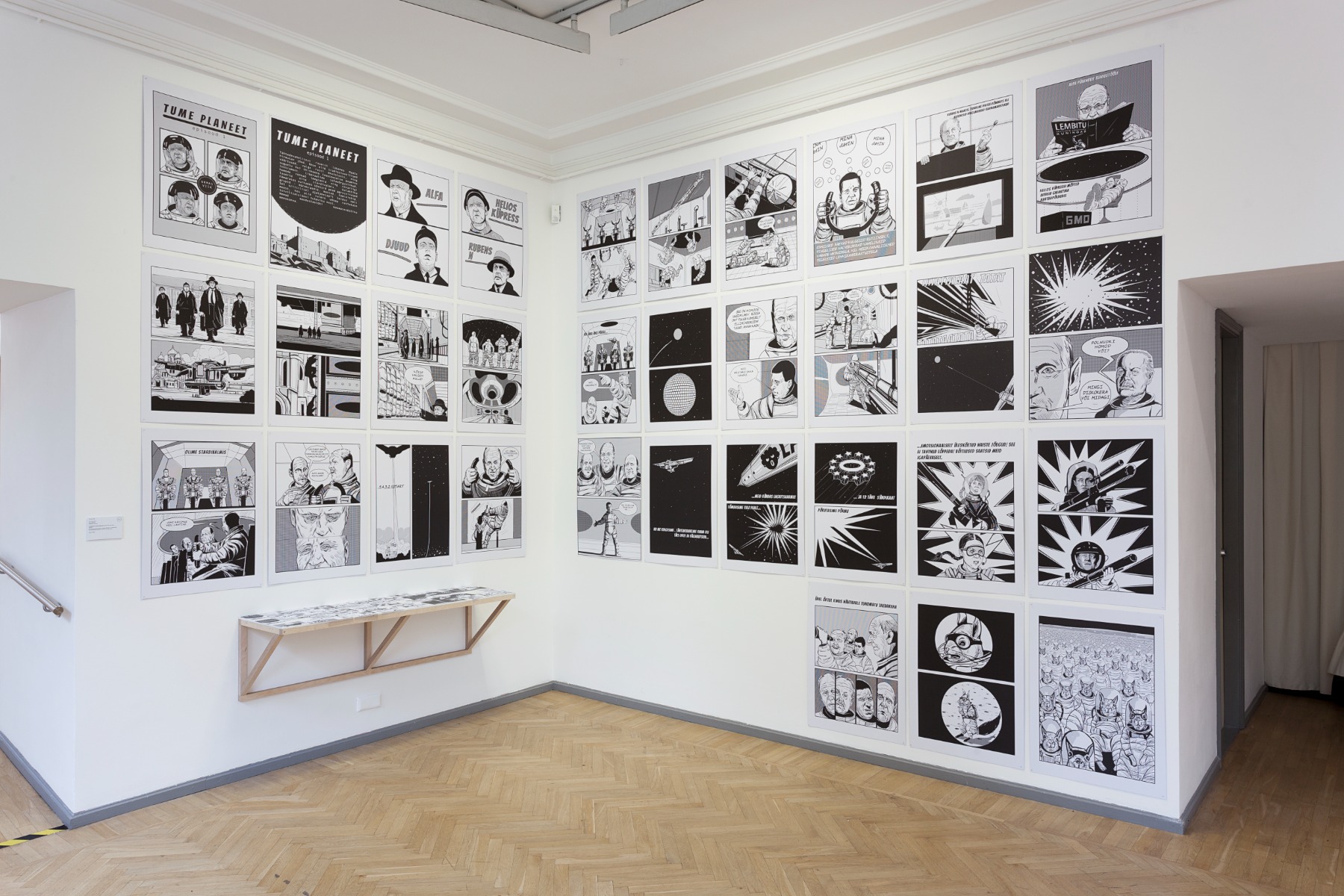
CA.: It is significant that my exhibition is taking place in one of the most established art institutions in Estonia. Indeed, I was very aware of the challenges and contradictions inherent in exhibiting multimedia, interdisciplinary, community-oriented projects of socially engaged artists in this center of power. The aesthetics of the exhibition are driven by the approaches of the artists themselves, who, because of their background and experiences of coming to maturity in politicized contexts, have adopted strategies of self-historicization, archiving, and discursive practices, together with irony, humor and the absurd. Some of the works deal with the local material culture familiar in Estonia; for example, Urmas Viik’s comic series Dark Planet presented as a series of black and white posters and a publication dealing with the virulent discourse of the far right through the lens of science-fiction. Others, such as Vala Foltyn’s In Roses with Trust, are based on an archive of a villa in Krakow, which has housed different generations of political activists, from antifascist feminist resistance figures to queer cultural leaders. The archive has been digitized and presented on textile materials, which give a nod to the history of the villa as a tailor’s shop and the materiality of Catholic rituals that Vala relates to. Dan Perjovschi’s drawings, which the artist created directly on the windows of the Art Hall, are a reference to the tradition of journalism and newspapers from his native Romania and are meant as a dialogue between the space of the institution and Freedom Square, whose rich historical layers pertain to Estonia’s recent history of occupation and independence.
Dan Perjovschi. Drawings. 2021. Exhibition "What Makes Another World Possible?" Photo: Paul Kuimet
5.
FM.: It is a bit like comparing Bayern Munich with Narva Trans, if speaking in football terms. But the inspiration behind Life in Decline derived from two exhibitions I saw at the Fondazione Prada in Venice: Jannis Kounellis (2019) and The Boat is Leaking. The Captain Lied (2017). Both exhibitions felt like having crossed a liminal threshold, as if you had entered into the hole of Alice in Wonderland, forcing you to reconfigure everything you knew beforehand.
Personally, I’m not interested in pedagogical art and exhibitions that establish historical canons. Indeed, I find them rather boring, and instead appreciate shows that create a suspension of knowledge, making you unlearn things instead of solidifying what you know. These days, I feel that there are too many pedagogical and historical exhibitions with a normative ambition in Tallinn, aiming to teach the audience about what art is and establishing how things should be interpreted according to a top-down canon; hence, I miss exhibitions that are explorative, experimental, non-conclusive.
Edith Karlson, Another short story. Exhibition "Life in Decline". Photo: Joosep Kivimäe
CA.: First of all, I think it should be clear that every artist in my show approaches the history of socially engaged art and the recent past in general through their own subjective lens. The past is so prevalent in my exhibition so that we do not feel guilty about it, but that we should feel responsible for it. It is not about establishing this cannon or another, although that inevitably happens when making these artistic endeavors that are about self-historicization and reflection. If we don’t feel responsible, there is no transformation. History is about things that make us feel uncomfortable and make us reflect on our present and how we see our collective futures. I hope that after engaging with installations such as Tanja Ostojic’s ‘Misplaced Women?’, which looks at migrants, and in particular, women’s rights, people feel uncomfortable about current politics in Europe regarding exodus. To create her performances, which are presented as photographs, videos and testimonies recorded over the course of a decade, Ostojić invited women to carry packed suitcases in public spaces in front of train stations, airports, borders crossings, police stations and refugee camps. I hope we can all feel a sense of responsibility as citizens to change things as we go forward and learn from history.
Work by Laura Kuusk. Exhibition "Life in Decline"
6.
FM.: Certainly, art can be a form of activism, but it is not convenient nor fair to put the responsibility of resolving collective social problems on the shoulders of artists. Current art activism can also be seen as part of a depoliticizing tendency, by which those who actually have the means and responsibility to deal with these issues transfer their tasks to common people and justify the non-intervention of the state. It is a way of privatizing risks, the a-b-c of neoliberalism. You also are aware that activist art can be done to please collectors and institutions, and some of these well-intentioned works end up commodified in the art market, or that some of the political messages get co-opted by institutions, city-branding, creative city discourse... doing the cooking of neoliberal governments while foregrounding financial interests and placing an emphasis on individual entrepreneurship.
Good intentions are not enough to produce a positive outcome. Doing something that one considers noble and necessary does not have to lead to a wider benefit than whitening our consciousness. Likewise, our sense of possessing the truth won’t automatically lead to general concern or social transformation. Instead of asking artists to be involved in changing the world, I would suggest to critically question the structures that make them suffer from precarity and mental problems, which are a contemporary plague not discussed often enough.
Daniela Ortiz. ABC of Racist Europe. 2017. Exhibition "What Makes Another World Possible?" Photo: Paul Kuimet
CA.: For me, regarding the notion of art activism, socially engaged art is, at its core, something that stems from non-commodifiable artistic impulses, even though the art market and some institutions may package them as commodities. I agree there is a distinction between art and traditional activism, and art and community work. The artists I have invited to participate in this exhibition are more interested in creating a shift in consciousness and, first and foremost, consider themselves as creators and concerned citizens, not merely as community organizers. It is about working with communities, especially those that are vulnerable or at-risk, in a way that is transformational intellectually and emotionally, and then taking those experiences to the viewer in the art exhibition to show how we are responsible and can intervene in the socio-political make-up of our worlds. Finally, I hope the exhibition serves as a welcoming space for solidarity and learning in common, which will inspire new artistic experiments, sensitivities, connections and communications.
Laura Kuusk, Vacant, 2021. Exhibition "Life in Decline"
7.
FM.: Each of us, as curators and as audience, have our own taste or interest. In my case, I truly enjoy art that is practiced as a salvaging operation through various exercises of tracing, rescue and repair, though more in the sense of Kader Attia than in Forensic Architecture… thus posing questions that are at once archaic and current, timeless and intrinsically contemporary.
I believe my work is political without being activist. It is political in all the phases of the production – by the topics I discuss, as well as how, with whom, and to whom. Like you do, I also invite people to reconsider the value of things, to talk about what and how things are perceived. However, it is very difficult to move beyond simply raising awareness. Art activism should aim to inspire alternatives, build communities, foster dialogue, and eventually, have a socio-material impact, not just a discursive one, limited to revealing reality; yet, my work does not do that – I merely try to engage with the micro-politics of contemporary life, paying attention to small gestures of care and moments of cognition. In literary terms, it would be a Pessoan or Camusian form of curation.
Nevertheless, we have to be careful with over-promising, because conveying a message is just that – conveying a message. Information does not imply concern, and even less action. And if “the whole world is watching”, if only to forget about it shortly after.
Ala Younis. Drachmas. 2018. Exhibition "What Makes Another World Possible?" Photo: Paul Kuimet
CA.: I really appreciate your observation that we are inviting people to reconsider the value of things and how things are perceived. In this sense, our exhibitions can be seen as complementary to each other. For me, accessing the past through artistic research is a way to engender a civic, democratic future. The subjectivities of those generations, who are now facing something as historically unprecedented as our planet, have never in recorded human history confronted so many absolute threats, should be shaped by an understanding of exemplary mobilizations, activities, assemblies, and meetings of the movements at the intersection of climate justice, anti-gentrification, anti-racism and so on, because all these urgencies are related. There is a direct relationship between the past and the future. In many ways, my exhibition is about the future and what kind of futures we want, and what kind of worlds we can imagine where the inspiring things we value can form the basis of a more dignified life. I encourage all the visitors of the exhibition to construct their own proposals for a different society that corresponds to the global challenges of the twenty-first century.
John Grzinich, Geofractions, 2021. Exhibition "Life in Decline"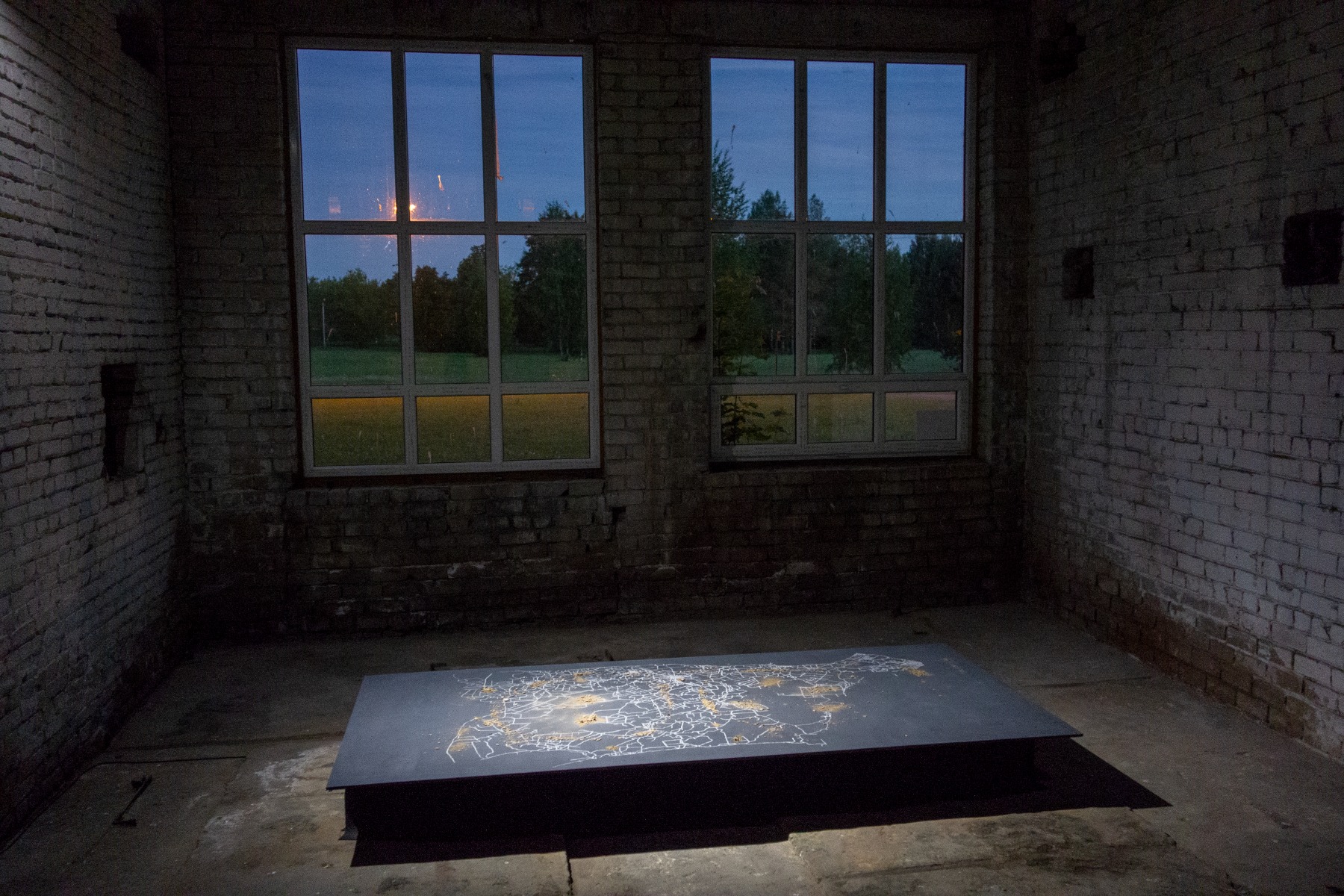
8.
FM.: You placed an emphasis on learning history; however, in Estonia, the past has not been a preparation for the present, precisely because of memory politics and how the national canon has been established; that is, by reducing anything that is Soviet or Russian to zero-value – to waste. That’s why repair practices are important: making complicated legacies available to new generations, allowing new access to them and contributing to revaluing the things that were made obsolete in the meantime, from people to ideas.
To continue with the football metaphor, I would say that Estonian contemporary art plays in the first European league. We can see it, for instance, in the level of art exhibitions here, in the number of artists exhibiting abroad, in the quality of the Pavilions in Venice (this year in the Giardini), in private galleries taking part in international art fairs, and in the knowledge about the field created through publications, teaching, databases, etc. I do not take all this for granted. An active and inspiring art field is a very fragile thing and requires constant maintenance work and support. If one pays attention to what the Estonian state invests in other fields, from the military to language politics and sports, as well as in other cultural fields, in comparison to the actual support to contemporary art, the results in our field are outstanding. See for example the work of EKKM (Contemporary Art Museum of Estonia) or the program of ‘Artists in Collections’…
Exhibition "What Makes Another World Possible?" Photo: Paul Kuimet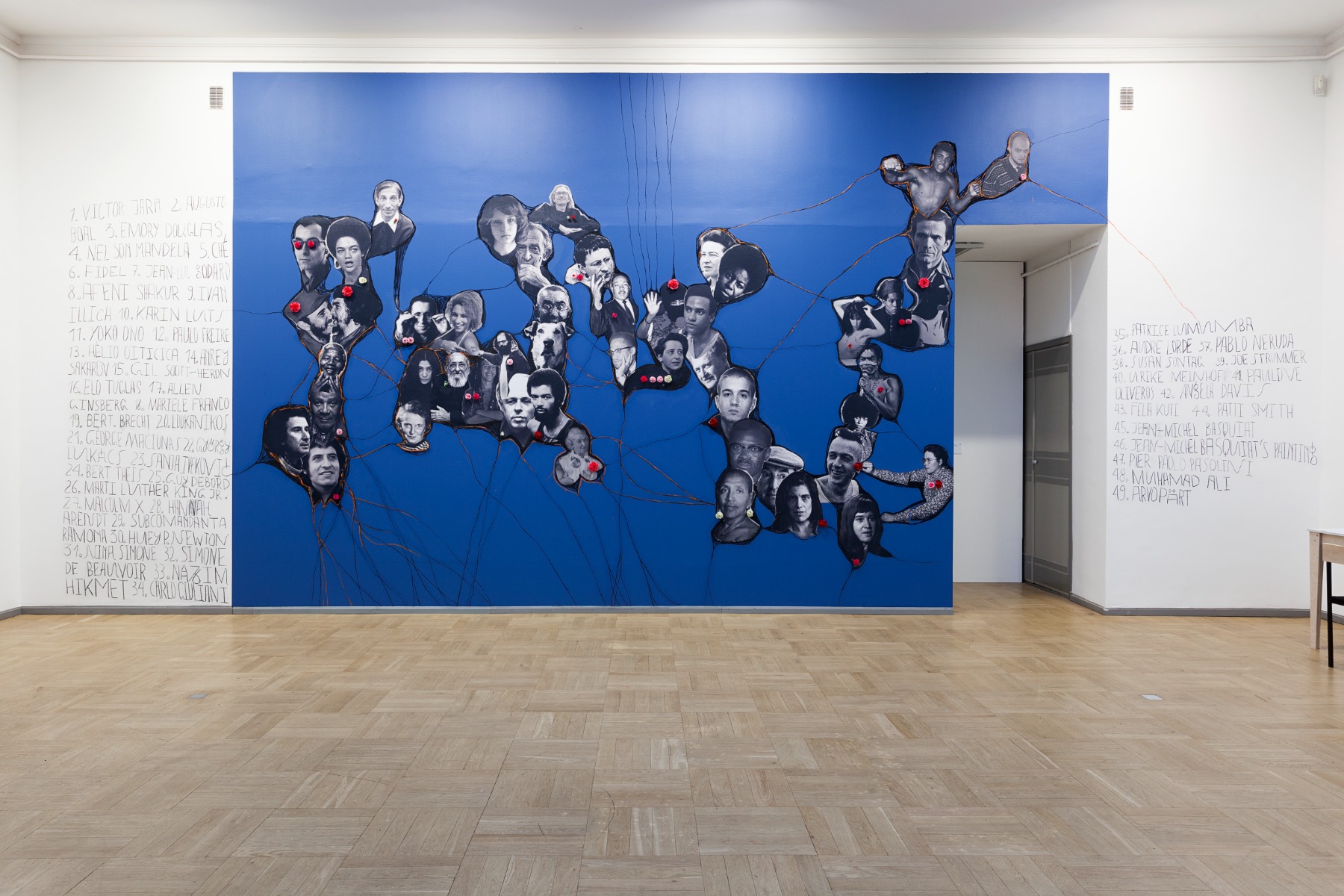
CA.:The conflicts and struggles in the field of art and education in Estonia are at the core of determining what kind of subjectivities will shape the culture(s) of future generations in the Baltics. It is very important to carefully analyze what is currently at stake in these specific fields of cultural processes and how they are linked with what is happening in and around established institutions, academies and centres. I believe institutions such as EKKM and dwindling artist-run spaces and groups the likes of Feministeerium need our full support to resist pressing commercial demands for flexible and “creative” subjectivities and to defend themselves from neoliberal, right-wing political groups’ desires to make examples of or erase them entirely. Can we imagine an alternative system of values based on a different meaning of progress?
Title image: Varvara & Mar. Rescue Plan. 2021. Site-specific installation at the exhibition "Life in Decline".
